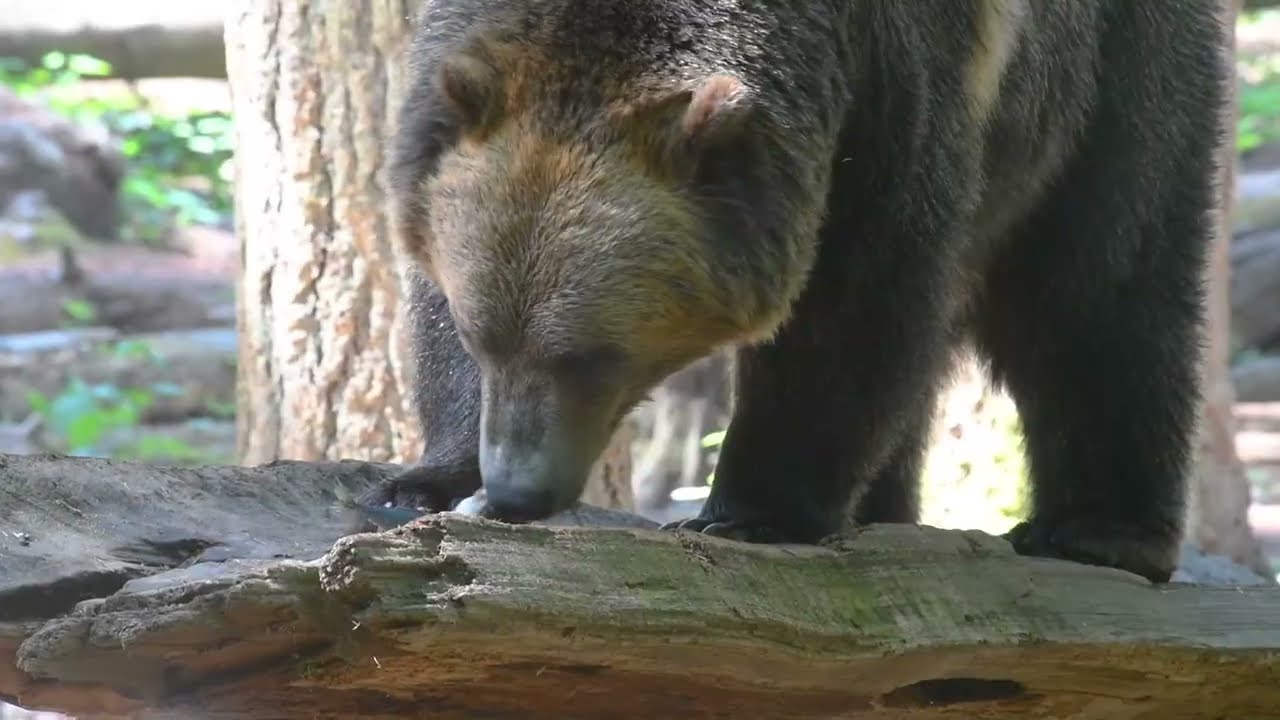- Introduction to Grizzly Bears Huckleberry and Hawthorne and their Background
- Lifecycle and Behavioral Patterns of Grizzly Bears
- Key Elements of Zoo Management and Wildlife Conservation
- Interactive and Educational Initiatives for Zoo Visitors
- Insights from Six Years with Huckleberry and Hawthorne in Captivity
Introduction to Grizzly Bears Huckleberry and Hawthorne and their Background
Grizzly bears, scientifically known as Ursus arctos horribilis, are among North America’s most majestic and formidable creatures. Huckleberry and Hawthorne, two iconic residents of a renowned zoological park, have captivated audiences and researchers alike for six remarkable years. This article delves into their journey, offering insights into their life in captivity, natural behaviors, and the concerted efforts for wildlife conservation that they represent.
Huckleberry and Hawthorne were introduced to the zoo in response to conservation efforts aimed at protecting grizzly bears from dwindling populations and habitat loss. Their arrival marked the beginning of a comprehensive program designed to emulate natural habitats, provide enriching experiences, and foster an understanding of the vital role these apex predators play in the ecosystem.
Lifecycle and Behavioral Patterns of Grizzly Bears
Grizzly bears have a complex lifecycle and behavioral patterns that are essential for survival in the wild. Born in the cold months of winter, cubs stay with their mother for about two to three years. During this period, they learn crucial survival skills such as foraging, hunting techniques, and territory navigation.
Observations from six years with Huckleberry and Hawthorne have provided invaluable data on grizzly bear behaviors in controlled environments. Grizzly bears are known for their solitary nature, except during mating season and when rearing their young. Their diet is omnivorous, encompassing a wide range of foods from plants and berries to fish and small mammals, reflecting their adaptable feeding habits.
Behavioral enrichment is a cornerstone of their care in zoos. This includes interactive feeding strategies, puzzle feeders, and environmental modifications to simulate the challenges they would face in the wild. Such enrichment not only keeps them physically active but also mentally stimulated, reducing stereotypic behaviors that can arise from the monotony of captivity.
Key Elements of Zoo Management and Wildlife Conservation
Zoo management is a multifaceted endeavor that balances animal welfare, visitor education, and conservation efforts. The institution housing Huckleberry and Hawthorne adheres to rigorous standards set forth by the Association of Zoos and Aquariums (AZA). This ensures that the bears receive the highest standards of care, with a focus on their physical and psychological well-being.
The zoological team constantly monitors their health through regular veterinary examinations, diet assessments, and behavior observations. Preventative care is paramount, encompassing vaccinations, parasite control, and dental health. The keepers’ deep understanding of bear biology and behavior informs every aspect of their daily routines.
Conservation programs are integral to zoo management, aiming to protect grizzly bear populations in the wild. This includes breeding programs, habitat restoration projects, and public awareness campaigns. Engaging with local and global conservation entities, these initiatives ensure a concerted effort to preserve grizzly bears and their natural habitats.
Interactive and Educational Initiatives for Zoo Visitors
Educating the public is a primary mission for zoos, fostering a connection between visitors and wildlife. Interactive initiatives, such as keeper talks, feeding demonstrations, and educational displays, bring the story of Huckleberry and Hawthorne to life. These programs highlight the importance of conservation and inspire visitors to take action.
Tech-savvy solutions, such as live-streaming of the bears’ activities and virtual reality experiences, offer unprecedented access to observe and learn about grizzly bears. These initiatives cater to a broader audience, including those unable to visit the zoo in person, thus expanding the reach and impact of educational efforts.
School programs and workshops organized by the zoo further enhance the educational experience. These sessions are designed to align with curriculum standards, offering students hands-on learning opportunities and deeper insights into animal behavior, ecology, and conservation.
Insights from Six Years with Huckleberry and Hawthorne in Captivity
The six-year period with Huckleberry and Hawthorne has yielded significant insights into grizzly bear adaptability in captivity. Behavioral studies conducted during this time have provided data crucial to understanding stressors and their mitigations. Enrichment activities, combined with socialization opportunities and habitat enhancements, have been shown to increase the bears’ quality of life dramatically.
Research conducted in the zoo contributes valuable knowledge that aids in the management of wild populations. By understanding how captive grizzly bears respond to various environmental and social stimuli, conservationists can develop strategies to support wild bears in increasingly fragmented habitats.
Moreover, the presence of Huckleberry and Hawthorne serves as a case study in the ethical implications of captivity. It raises questions about the balance between conservation needs and animal welfare, urging continuous improvement in zoo practices and policies.
The journey with Huckleberry and Hawthorne underscores the importance of integrated conservation efforts, combining in-situ and ex-situ strategies to safeguard grizzly bears for future generations. Through meticulous care, rigorous scientific research, and comprehensive educational outreach, zoos can play a pivotal role in wildlife conservation and public engagement.
*****
Source Description
Celebrate grizzly bears Huckleberry and Hawthorne’s 6th year at Northwest Trek with special keeper chats and enrichments this Saturday and Sunday! 🐻🐻 www.nwtrek.org/6-years-grizzly-bears

